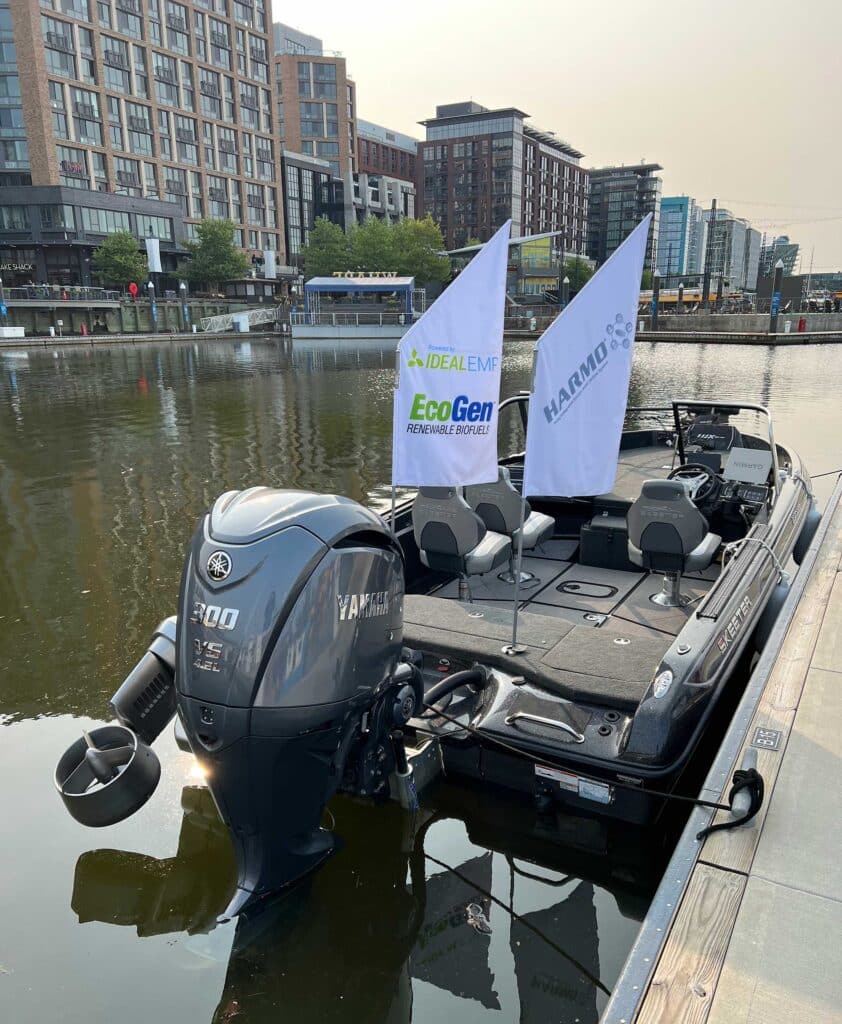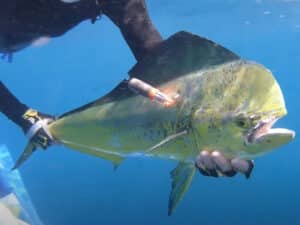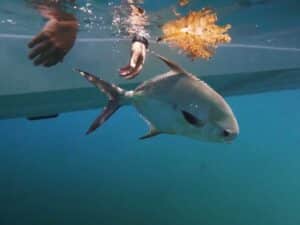
While the world accelerates toward electric power, the marine industry waves a caution flag. What might seem a simple environmental solution can’t resolve the unique roadblocks faced by boatbuilders and engine builders. The industry needs a stopgap, and sustainable marine fuels seem to fit.
“There are currently 12 million existing boats in the market,” says Ben Speciale, president of Yamaha US Marine Business Unit. “The option of using sustainable marine fuel within these vessels paves a path to carbon neutrality within product already on the water.”
Earlier this year, Yamaha Marine announced a sustainable marine fuel-testing initiative with the National Marine Manufacturers Association and other industry partners. The group plans to identify fuels that significantly reduce carbon-dioxide emissions while maintaining boat range and performance.
Already, Yamaha has demonstrated sustainable marine fuel-powered vessels at February’s Miami International Boat Show and at the Bassmaster Classic and American Boating Congress this spring.
Sustainable marine fuel, not batteries, can deliver the substantial power vessels need. In fact, boats require 10 times more energy to move through the dense world of water than a vehicle needs to drive a slick roadway. That’s a pretty heavy lift for your outboard engines.
While electric propulsion such as Yamaha’s 3.7 kW (9.9 hp) Harmo offer a potential solution for small, lightweight boats in specific situations, it can’t generate enough energy density for most boats.
Energy density has a very technical definition, but a comparison shows its impact: Gasoline produces 922,000 Btu per cubic foot of energy density, while lithium-ion nano batteries deliver 174,000—a 5.3-to-1 ratio.
Sustainable marine fuels, which combine various components with gasoline, generate enough energy to deliver acceptable performance and range. However, the primary biofuel currently in use—corn ethanol—also can damage engine parts and create corrosion.
Yamaha’s demo vessels use EcoGen 93, which is a blend of 17 percent ethyl tertiary-butyl ether (trade named Ideal EMP) and gas, and is 10 percent carbon neutral compared with 7 percent for ethanol. Ideal EMP is made from natural gas and biomass, which is any organic material that would otherwise rot in the field and become part of the carbon chain, explains Martin Peters, Yamaha’s director of marine external affairs.
A company called VP Racing blends and markets EcoGen 93. Peters says that the fuel can be delivered now in barrels and will be distributed in Texas by summer and at Southeast locations later this year. It’s expected to cost about the same as current gasoline.
Yamaha plans to use an EcoGen-powered 23-foot vessel to demonstrate the fuel’s capabilities to Congress members at on-water locations near Washington D.C., Peters says. “Our strategy is to assist the fuel industry in getting the regulatory support to smooth the way for distribution,” he says. “There are currently barriers to this in the Renewable Fuel Standard.”
In the future, improved battery technology might deliver better answers for outboard power. Until then, sustainable marine fuel—and potentially hydrogen or additional hybrid solutions—can drive the marine industry toward more eco-friendly propulsion.








